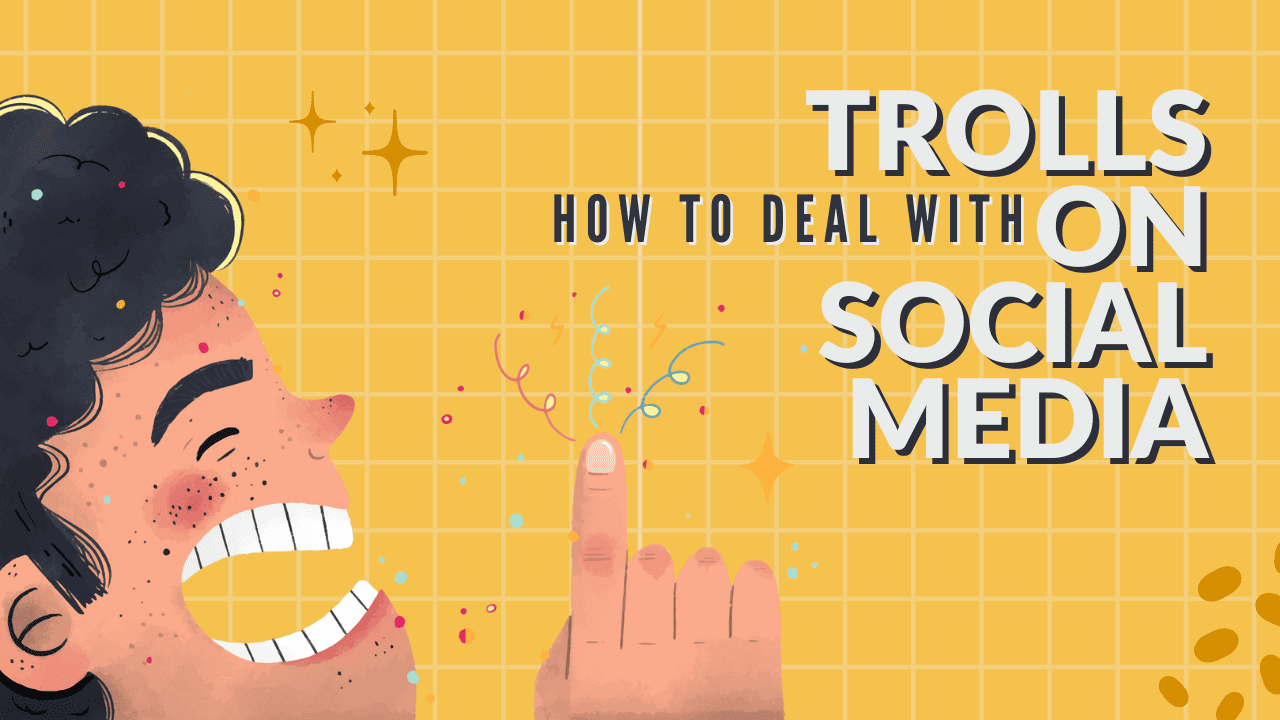Require assistance handling trolls in your comment sections? Here are some tips for you to deal with trolls on social media, saving you time from individually responding to every comment they leave on your content.
What is a troll on social media?
Well, it’s not this.
Or this:
Or any other image that comes up in your head when you think about trolls.
That’s because Internet trolls are, well, regular people. Except they spend time trolling other people and brands online – on social media, forums, etc. Wherever there’s an opportunity to comment or send messages meant to upset others, make fun of them, or just waste their time. Including social media moderators’ time. That’s exactly when an online troll posts inflammatory or otherwise offensive content.
Because if anyone knows Internet trolls well, it’s social media moderators. They remove the offensive content. Trolls look out for the swear words and spam links. They make sure trolls are not just not ruining the brand’s reputation but also not ruining the friendly space for other followers to share comments and have conversations in the comment section.
Because that’s what trolls do. What’s more, trolls thrive doing it. They pop up in the comments with stuff that’s meant to provoke or upset. And if you join their game, then yes, you’ll have lots of comments (and engagement), but you’ll also have discussions that make your comment section an unpleasant place to be in. Not to mention, you’ll be wasting so much moderation time you could be spending on building a valuable brand community.
And no brand or creator wants that.
How to tell if you’re dealing with a troll on social media
Though trolls can trick you into replying and sometimes even heated discussions (that’s the whole idea behind trolling,) fortunately, there are clear signs you have to deal with trolls on social media that can save you a good amount of time and frustration.
You instantly feel irritated or frustrated by reading a comment
That’s a telltale sign of a troll comment. This is the moment when you should trust your intuition and take a minute or two to identify what you’re dealing with before you start replying and playing the troll’s game.
They don’t make sense
Another telltale sign. They might focus on one tiny, seemingly irrelevant thing from your original post. It might even be a typo (classic!) This gets blown out of proportion, and if you give in and take part in the discussion, the whole thing suddenly blows up.
There’s name-calling, swear words, hate speech, etc
In general, things that are not accepted in casual conversations with strangers. If you wouldn’t tolerate something in an exchange on the street in real life, there’s no reason for you to do it online.
They don’t give up
The conversation just doesn’t end. And if you do ignore them, they keep coming back, posting comments or sending DMs. (Trolls hate being ignored – it goes against the very idea of being a troll. They live off your attention.)
They’re changing the subject
I mean, we already agreed that they’re not making sense, so this is to be expected, right? I guess the takeaway is: if you’re not having a cohesive conversation, and you’re confused why someone would even as that question, then yes, you might be dealing with a troll.
10 tips on how to deal with trolls on social media
Here are some best practices and tips to avoid falling into the troll trap and stop trolls from sucking away your time – the time you could be spending on valuable conversations with customers. Luckily, you can do that with the right approach and tools. And the good news is, once you’ve done that enough times, you’ll recognize a troll from miles away and will know what to do.
1. Don’t feed the trolls
It’s common advice for a reason – the reason being it works. Trolls live off your attention; that’s the whole point of trolling. So don’t give it to them: don’t reply (or reply matter-of-factly without giving in to the often absurd discussion). Ignore them. Even if you’re tempted to give in and play the troll’s game.
This might take a bit of practice, but eventually, you’ll be good at ignoring troll comments. 😉 That is, of course, not to say you should ignore comments in general. Just the ones that cause you (and your followers) a headache for no reason.
2. Take a breath before replying
If you do want to reply (because leaving the comment unanswered would look bad, which is always possible), never reply hastily. Take a deep breath, go outside for a moment if you can, or just walk around the room. Make yourself some tea. (You can also use that advice when replying to an unhappy customer.)
Calm your nerves and try distancing yourself. Trolls only wait for you to take part in what they have planned for you. Don’t give them that.
(Again, this is also something you get better at with time. Speaking from experience here. ;))
3. If you reply: stick to the facts
When you reply, try and strip your response of emotions and opinions. (This will be easier after you follow tip #2.) Use facts only, in a matter-of-fact way. No arguing, no discussions. That’s what the troll wants, remember? And it’s not worth ruining your day (which, unfortunately, trolls can do.)
It’s not always going to be easy to reply to a troll comment with facts. But then you have all the other options listed here to choose from.
4. Have a policy in place
To make all of the above easier, creating a social media policy that details how to deal with troll comments can be helpful. Especially for those people in your company who are just starting and don’t have years of experience dealing with trolls on the Internet. But also so your entire team is consistent in their replies and knows how to deal with trolls on social media. The policy should detail the recommended actions in specific scenarios – how and when to reply when to ignore when to go straight to “hide” or “delete.” When to escalate, and how to avoid things blowing up and possibly leading to a social media crisis. (Yes, trolls can do that, too.)
Make sure everyone who deals with troll comments knows about it and knows what to do.
5. Keep an eye on your comments
Well, that seems pretty obvious, but still worth highlighting here. The more engagement you get on social media, plus the more social media platforms and accounts you manage, the more challenging it becomes to keep track of what’s going on in the comments, messages, and reviews. That’s why getting one Social Inbox to collect all of them in one place can be a blessing.
This way, spotting troll comments can become much easier – you don’t have to log in and out of accounts (and when you have a lot going on, you already know it’s inefficient.)
You have one stream of comments you can then prioritize, manage, and moderate, and everyone can be on the same page.
6. Hide, block, or delete
Besides ignoring or replying, you have some other options when handling troll comments. Delete the comment if there’s no right way to answer it or if it’s plain offensive. Hide it – the author will not know you’ve hidden it (they’ll still see it, but your other followers won’t) Block the troll altogether – if they’re super persistent, and it doesn’t look like they’re going to stop (why waste your time deleting/hiding the comments all the time?).
7. Auto-moderate troll interactions
Automatically delete or hide comments with swear words, links, or certain words and phrases you already know “your” trolls will use. Automatically delete or hide comments from users you already know are trolls and have tagged them in the Social Inbox as such. Send auto-replies based on selected keywords (I mean, why not have one canned reply to all the trolls?)
You can do all of the above for Facebook and Instagram ads as well – trolls like to hang out, too. And untackled troll comments under ads can actually hurt your conversion rates. Not worth risking that.



